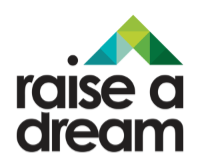Bringing projects to life, collaborating with businesses, and securing sponsorship in support of the dreams you are raising and projects you are working on will be supported by a plan. A great way to remember some of the important collaboration, sponsor relations, and project planning tasks is to think about the 5 P's of project success.
What Are the 5 P’s of Project Success?
In short, the 5 P’s of project success stand for:
- 1Products
- 2Pricing
- 3Promotions, Processes & Systems
- 4Publicity & Media
- 5Plan
More...
#1: Products
Every review period (e.g. start of year, end of year, start of a project), outline what your current products are, then identify what possible and/or projected products you might be bringing to life this year. Having your product development goals charted is helpful for big picture planning, reducing overwhelm, and for identifying where you might need help bringing these products to life.
#2: Pricing
Are you checking the pricing of your products, services, and events on a yearly basis? This is important. Underlying this “price check” is to know the cost of delivering each product or service. Oftentimes, products and services are priced too low or are set at just a cost-recovery basis and, therefore, there is more financial loss. You also need to know what the market will bear in terms of pricing so it’s important to stay on top of trends and research what others are doing.
#3: Promotions, Processes & Systems
Take a thorough look at the project and the promotional marketing plan. Where are there repeated tasks where you can set up a process or a system? One example might be creating tasks in a project management platform such as Asana (this is what we use at Raise a Dream), Teamworks, or Basecamp. Look at the specific steps involved in a process and turn these into a system template that you can replicate time and time again, saving you time, energy, and money.
#4: Publicity & Media
Getting your project promoted through media, podcasts, and publicity is definitely an asset and goes a long way in garnering the attention your project needs AND deserves. Media and publicity can also help you in standing out to collaboration partners and sponsors. Track your media appearances or articles, your media contacts (such as newsdesk contacts, the journalists who interviewed you, TV and podcast hosts you were interviewed by, etc.), and ensure you connect with all your media contacts on LinkedIn. If you are only connected by email and the person moves to another media outlet, you no longer have them in your radar or an active point of contact for them.
#5: Plan
Your plan is the outcome when you achieve the projected goals on each other project planning tasks. If you are engaging collaboration partners and sponsors, a plan is essential to the success of these relationships. When you are creating plans, take some time to look at the trends that are relevant to you. For example, as an expert in sponsorship and as a professional speaker, I follow the trends in both sectors. Here is an example: 7 In-Person Event Trends for Sponsorship, Speakers & Industry Sectors
Why not mark a “5 P’s of project success” task in your calendar every quarter for the next year? This is a great way to create new supportive practices.



0 comments